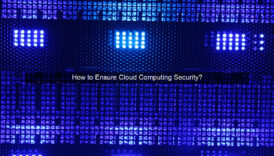How to Ensure Cloud Computing Security?
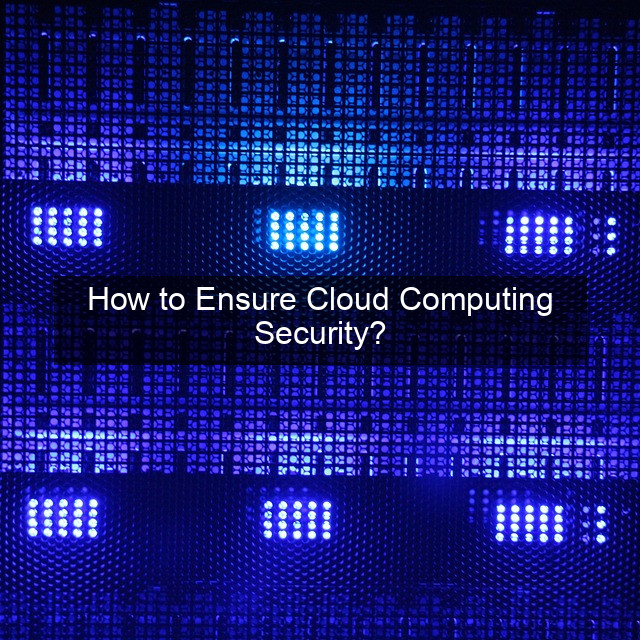
- How to Ensure Cloud Computing Security?
- How to Ensure Cloud Computing Security?
- Access Control and Identity Management
- Implementing Strong Passwords and Multi-Factor Authentication
- Principle of Least Privilege
- Data Encryption and Protection
- Data at Rest and in Transit
- Data Loss Prevention (DLP)
- Security Audits and Monitoring
- Regular Vulnerability Scanning
- Intrusion Detection and Prevention
- Conclusion
- Frequently Asked Questions (FAQs)

How to Ensure Cloud Computing Security?
The cloud has revolutionized how businesses operate, offering scalability, flexibility, and cost-effectiveness. However, this digital transformation comes with inherent security risks. Protecting sensitive data in the cloud requires a comprehensive and proactive approach. Simply migrating to the cloud without addressing security concerns is like leaving your front door unlocked in a new neighborhood. This article delves into the essential strategies and best practices for ensuring robust cloud security, empowering organizations to confidently harness the power of the cloud while mitigating potential threats.
From understanding shared responsibility models to implementing advanced security measures, we’ll explore the key elements of a secure cloud environment. This includes access control, data encryption, and regular security assessments. By adopting these practices, businesses can build a resilient cloud infrastructure that safeguards their valuable data and maintains customer trust. Ignoring cloud security is no longer an option; it’s a necessity for survival in today’s interconnected world.
Access Control and Identity Management
Implementing Strong Passwords and Multi-Factor Authentication
The first line of defense in cloud security is robust access control. This begins with enforcing strong password policies and implementing multi-factor authentication (MFA). Strong passwords should be complex, lengthy, and unique, making them difficult to crack. MFA adds an extra layer of security by requiring users to verify their identity through multiple channels, such as a code sent to their phone or email. This significantly reduces the risk of unauthorized access even if passwords are compromised.
MFA is no longer a luxury but a necessity in today’s threat landscape. It provides an additional barrier against unauthorized access attempts, even if credentials are stolen. By requiring multiple verification factors, organizations can significantly enhance their security posture.
Encouraging regular password changes and educating users about best practices is also crucial. Users should be aware of phishing scams and other social engineering tactics used to steal credentials. Regular security awareness training can empower employees to identify and avoid these threats.
Principle of Least Privilege
The principle of least privilege dictates that users should only have access to the resources they absolutely need to perform their job functions. Granting excessive permissions increases the potential damage if an account is compromised. By limiting access to only necessary resources, organizations can minimize the blast radius of a security breach.
Implementing role-based access control (RBAC) is a practical way to enforce the principle of least privilege. RBAC allows administrators to define roles with specific permissions and assign users to those roles. This simplifies access management and ensures that users only have the necessary privileges.
Regularly reviewing and revoking unnecessary access is essential for maintaining a secure cloud environment. User roles and permissions should be audited periodically to ensure they align with current job responsibilities and organizational needs.
Data Encryption and Protection
Data at Rest and in Transit
Protecting sensitive data is paramount in cloud security. Data encryption is a critical measure for safeguarding information both at rest and in transit. Encrypting data at rest ensures that even if unauthorized access occurs, the data remains unreadable without the decryption key. Similarly, encrypting data in transit protects it from interception during transmission.
Utilizing strong encryption algorithms and securely managing encryption keys are essential for effective data protection. Organizations should choose industry-standard encryption methods and implement robust key management practices to ensure the confidentiality and integrity of their data.
Regularly reviewing and updating encryption practices is crucial to stay ahead of evolving threats. As new encryption technologies and best practices emerge, organizations should adapt their strategies to maintain a high level of data security.
Data Loss Prevention (DLP)
Data loss prevention (DLP) tools and strategies are essential for preventing sensitive data from leaving the organization’s control. These tools can monitor and block the transfer of sensitive data, such as credit card numbers or personally identifiable information, outside the authorized channels.
Implementing DLP policies and procedures can help organizations comply with data privacy regulations and protect their reputation. By preventing data leaks, organizations can avoid costly fines and maintain customer trust.
Regularly testing and refining DLP policies is crucial for ensuring their effectiveness. Organizations should conduct periodic reviews and simulations to identify and address any gaps in their data loss prevention strategy.
Security Audits and Monitoring
Regular Vulnerability Scanning
Regular security assessments and vulnerability scanning are essential for identifying and addressing potential weaknesses in the cloud environment. These scans can detect vulnerabilities in software, configurations, and network infrastructure, allowing organizations to proactively patch and mitigate risks.
Utilizing automated vulnerability scanning tools can streamline the process and provide continuous monitoring. These tools can automatically scan for known vulnerabilities and alert security teams to potential threats.
Penetration testing, or ethical hacking, can further enhance security assessments by simulating real-world attacks. This helps organizations identify and address vulnerabilities that automated tools might miss.
Intrusion Detection and Prevention
Implementing intrusion detection and prevention systems (IDPS) can help organizations identify and block malicious activity in real-time. These systems monitor network traffic and system logs for suspicious patterns and automatically take action to prevent or mitigate attacks.
Configuring IDPS systems to alert security teams to potential threats is crucial for timely response and remediation. These alerts can provide valuable insights into attack patterns and help organizations improve their security posture.
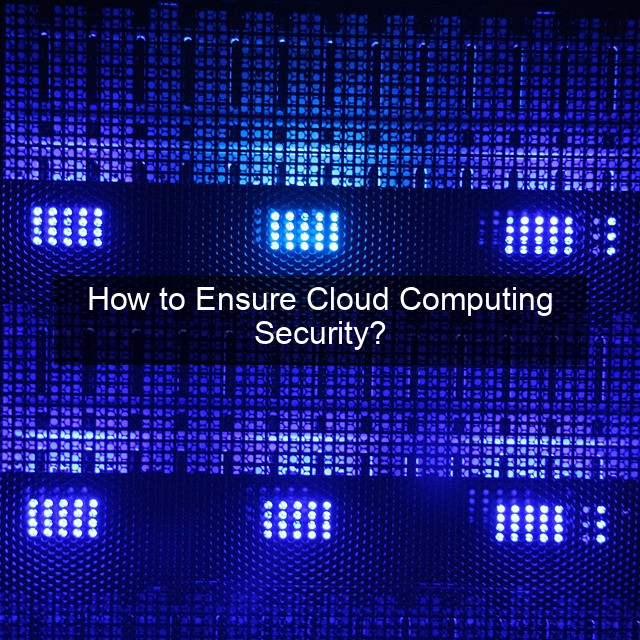
Regularly reviewing and updating IDPS rules and signatures is essential for staying ahead of evolving threats. As new attack techniques emerge, organizations should adapt their IDPS configurations to effectively detect and prevent them.
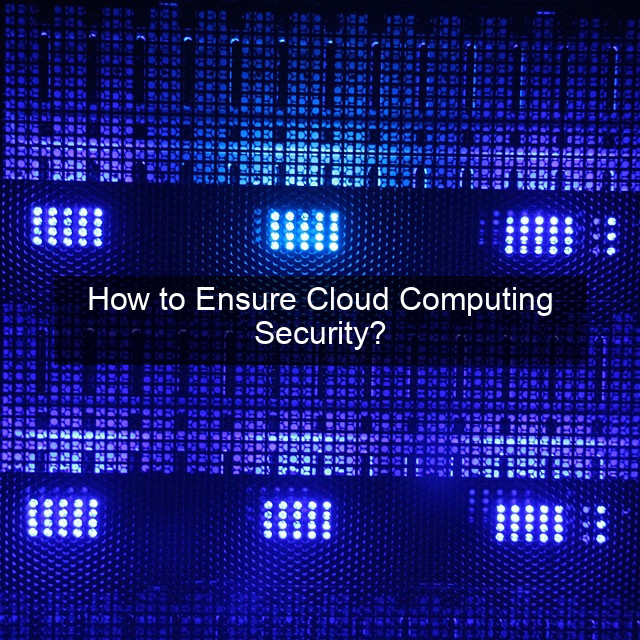
Conclusion
Securing cloud computing environments requires a multifaceted approach that encompasses access control, data encryption, security audits, and continuous monitoring. By implementing these strategies and best practices, organizations can significantly reduce their risk of security breaches and protect their valuable data. A proactive and comprehensive security strategy is not just a best practice; it’s a necessity for thriving in the cloud era.
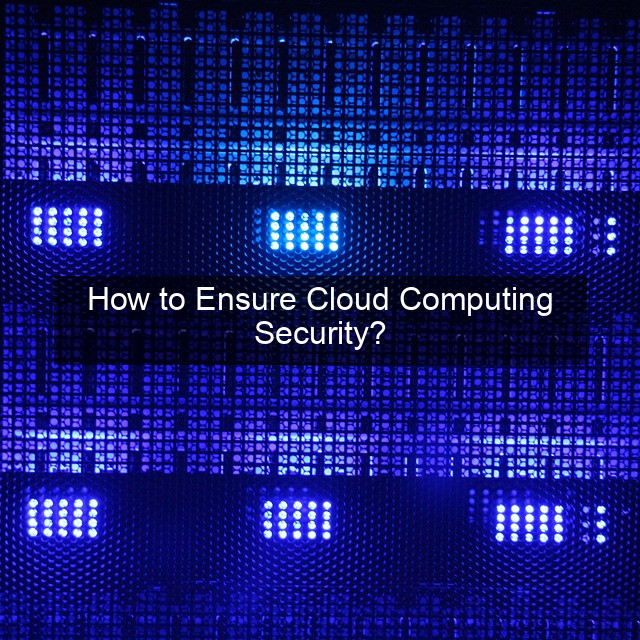
Frequently Asked Questions (FAQs)
What is the shared responsibility model in cloud security?
The shared responsibility model defines the security responsibilities between the cloud provider and the customer. The cloud provider is responsible for securing the underlying infrastructure, while the customer is responsible for securing their data and applications within the cloud environment.
How can I choose the right cloud security solutions for my business?
Choosing the right cloud security solutions depends on various factors, including the specific needs of your business, the type of cloud deployment model you are using, and your budget. It is essential to assess your security requirements and choose solutions that address those needs effectively.
What are some common cloud security threats?
Common cloud security threats include data breaches, malware infections, denial-of-service attacks, and insider threats. Organizations should be aware of these threats and implement appropriate security measures to mitigate them.
| Security Measure | Description |
|---|---|
| Multi-Factor Authentication | Adds an extra layer of security by requiring multiple verification factors. |
| Data Encryption | Protects data both at rest and in transit. |
| Vulnerability Scanning | Identifies potential weaknesses in the cloud environment. |
- Implement strong passwords and MFA.
- Encrypt data at rest and in transit.
- Conduct regular security audits and vulnerability scanning.

